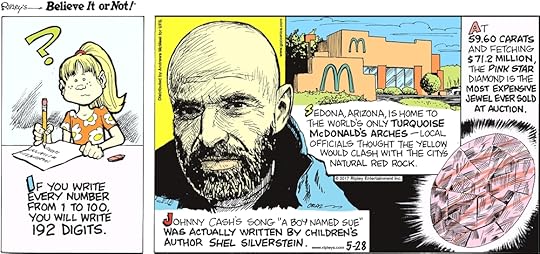Ripley Entertainment Inc.'s Blog, page 409
May 29, 2017
CARTOON 05-29-2017
May 28, 2017
CARTOON 05-28-2017
May 27, 2017
CARTOON 05-27-2017
May 26, 2017
16 Crazy Japanese Inventions
Featured in Ripley's Believe It or Not!

Chindogu is the Japanese art of inventing silly and useless gadgets to solve everyday problems. Translated literally, ‘Chindogu‘ means valuable or priceless tool. Yes, these inventions are genius, but you would probably look pretty silly using them out in public.
(Actually, there are a few inventions here that we would actually use. No shame!)
Here are 17 hilariously crazy and brilliant inventions only Japan could have thought up:
Butter Grater
Tired of hard butter destroying your toast? This butter grater will fix that.

via Lost at E Minor
Umbrella Tie
For those days where you’re not sure if it’s going to rain or not.

via NovoEd
Eyedrop Funnels
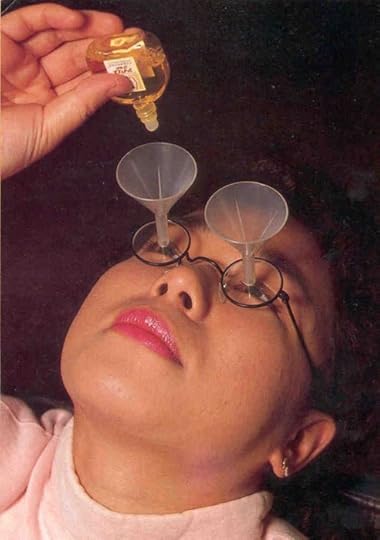
Silent Karaoke
For those times you want to belt out a tune, but don’t want anyone to hear you.
Sound Catcher Pillow
Now you can still hear the TV when you lay down.
Square Watermelon
Square Watermelons are both easier to pack and ship. They are gown in a case to get them into the shape.
Hearing Enhancer
If hearing aids are too discrete for you, try one of these hearing enhancers.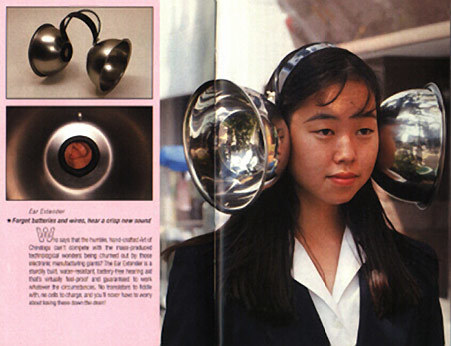
Chopstick Fan
We know you’re busy and don’t want to wait for your noodles to cool on their own. This is for you.
Rain-Proof Umbrella
When a regular umbrella isn’t enough.
Simple Ear Explorer
Explore the far away land of your own ears… We wouldn’t recommend this one.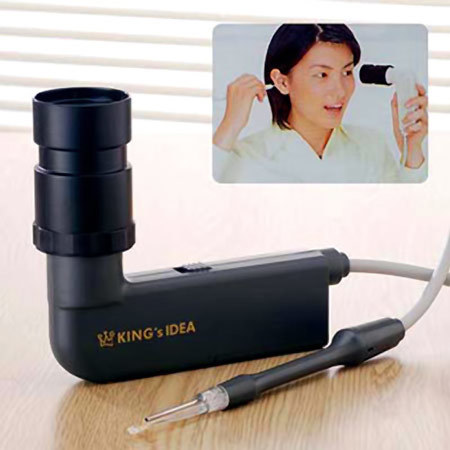
Bubble Wrap Keychain
Instant stress relief that’s always ready to pop.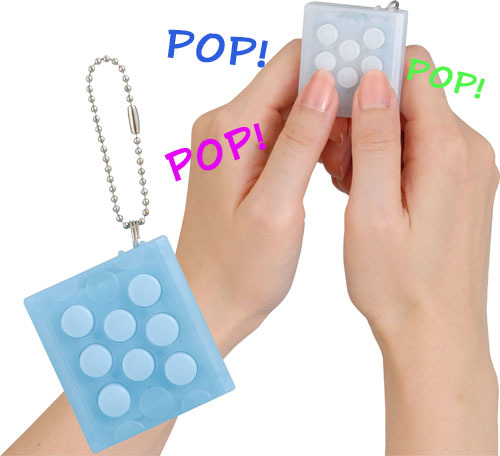
DIY 360 Degree Camera
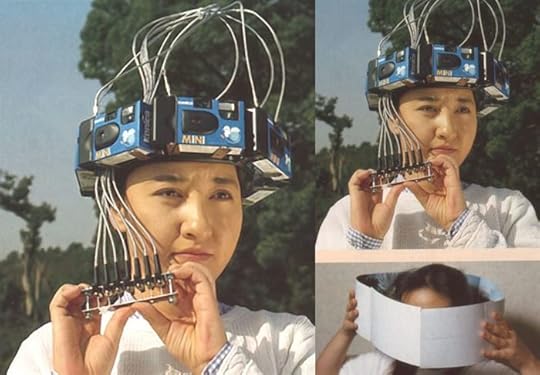
Book-Shaped Pillow
When you spend your days studying in the library, this book-shaped pillow is the perfect night-time companion.
Shoe Umbrellas
Only in Japan. Keep your shoes from getting splashed.
Banana Case
Yep, the banana case that we all know and love was actually invented in Japan.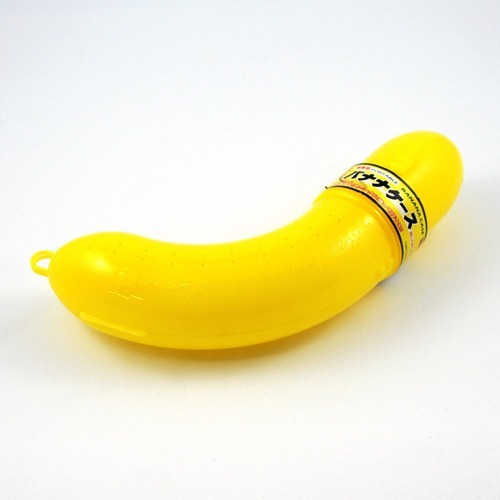
Battlescratch Shirt
Now, this is genius. When you have an itch you can’t scratch, direct your friend to the right spot on your back.
Source: 16 Crazy Japanese Inventions
Why is There an Aluminum Foil Train in Poland?
Featured in Ripley's Believe It or Not!
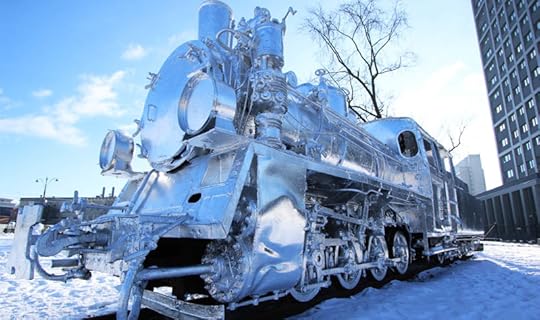
Looking like something out of a long forgotten version of the future, artist Piotr Janowski is the man behind the foil train. Dubbed Get off, Łódź Fabryczna, Janowski especially designed this piece for the opening of the new train station. Łódź Fabryczna is a reflection of the turbulent history of the city and its bright future.
Piotr gained international fame last year when he covered his Florida home completely in aluminum foil. The windows, doors, walls, driveway, and even the palm trees were covered in glittering metal.

The Process
Piotr and his team of 14 assistant–students from the local academy of fine arts–covered the 42-foot long locomotive with approximately 3,900 square feet of Reynold’s heavy duty aluminum foil. The entire process took four days.

The steam locomotive used was a Px 48 built in Poland in 1953. The 42-ton train will sit in front of the train station at the heart of the city’s new center.
“It is very important for me to involve the urban and the natural environment into my art and to open new perspectives. Aluminum as a medium gives me the chance to gain great depth and vibrations of colors and tones mirroring the surrounding space” -Piotr Janowski.
The reflective coating added to the train emphasizes the detailed texture of it and causes an unpredictable bouncing of colors.

Project Meaning
Interestingly, Janowski sees the locomotive as a background piece. With the entire surrounding train station and people reflected by its surface, the entire area becomes a part of the art.
“Paradoxically, it is revealing through concealing.” – Piotr Janowski
Piotr hopes his art piece will be the start of a prosperous future for the Polish town of Łódź as it goes through a period of urban renewal after the decline of the textile industry that once dominated the town.

Beanie Babies: Where Are They Now?
Featured in Ripley's Believe It or Not!

Cool Stuff, Strange Things
Hosted by Ripley’s lead researcher, Sabrina Sieck, let Ripley’s Believe It or Not! introduce YOU to the coolest stuff and strangest things.
Today: Beanie Babies
The Beanie Baby Bubble
Barraged by the parents every holiday, we are facing a serious crisis. What was once supposed to fund a college education now sits idle in our parents’ attic. Today, on Cool Stuff and Strange Things, it’s time to ascend into that graveyard of Rubbermaid and rafters and accept that this is life after the Beanie Baby bubble burst.
The adult version of “clean your room,” is now “what are you going to do with your Beanie Baby collection that is taking up precious space that could store even more ridiculous Christmas decorations!” Even daring to ask if the once beloved bag of beans are worth anything…
Years ago, you could have whipped out the 1998 edition of the Beanie Baby Handbook and given an exact value of each beanie baby. Beanie babies were supposed to be a good investment, but today, you’re lucky to get a dollar on eBay.
What Happened?
Beanie Baby creator, Ty Warner, lucked out though. He is currently worth 2.5 billion dollars.
Warner set out to make a stuffed animal so affordable that a child could buy it with one week’s worth of allowance—selling for just five dollars and gaining mass popularity. The fad quickly went rampant. Shops would limit one per customer, characters would retire never to be sold again, and each run would be produced slightly different—all creating a hysteria around the scarcity of these glorified bean bags.
Coinciding with the rise of eBay, Beanie Babies made up an insane 10% of the website’s sales. McDonald’s also profited by introducing the “Teenie Beanie Baby” Happy Meal toy in 1997—the company’s most successful promotion ever. It was supposed to last a month, but the company ended up giving away all 100 MILLION toys—one for every child in America—in just ten days!
Tragedy Strikes
In 1999, the beaniest Belive It or Not went down. Divorcing couple Frances and Harold Mountain couldn’t agree on how to split up their estimated $5,000 collection and were ordered by a judge to divvy up their Beanies one by one in a Las Vegas courtroom Poor Maple the Bear was the first to go.
Then there’s the dark side to this madness…
People were smuggling Beanies into the United States at such an alarming rate that the company had to issue an embargo, stating, “a consumer is allowed to have one Beanie Baby for personal use every 30 days.” One customs inspection yielded a haul of 15,000 Beanies!
And, over in Kankakee, Illinois, in an attempt to clean up the streets, the police department offered to accept guns in return for Beanie Babies. Demand for the coveted creatures exceeded expectations, and in just half-an-hour, before the strange swap began, people were already lined up around the block. All forty toys were traded for firearms.
So what’s the plan for your beanie babies? Will you be sneaking them back into your parents’ attic, hoping they’ll be worth something someday?
Share & Subscribe
If you liked the show, please share it with your peeps. Remember to SUBSCRIBE to our channel to stay BION-informed!

CARTOON 05-26-2017
May 25, 2017
Placenta Art Is a Thing, No Really. See for Yourself!
Featured in Ripley's Believe It or Not!

From heart shaped placentas to it beautifully being spelled out to say, love, this form of art seems to be taking over the world! #YES!
Teddy Bear
Aw yes, the thought of cuddling up to your placenta teddy bear has us daydreaming every single day. Created by Alex Green, this designer knows how to keep life alive after birth. As Green would like to say the “Twin Teddy Kit”‘ has been created to celebrate ‘the unity of the infant, the mother, and the placenta.’
Wait a minute, a kit?
You betcha! This knapsack comes prepared with an emulsifying mixture of tannin and egg yolk. Delicious. Remember, before you go on and take your placenta home, you’ll have to cut it in half, rub some sea salt into it. That way, you can cure it. Oh, don’t forget to dry it out so you can use the tannin and egg yolk to it make silky smooth. This is the best to start shaping your cute cuddly bear.
Art Forms
UK Singer Rochelle Humes was recently gifted, from Placenta Plus, a frame with her dried umbilical cord formed into the word love. The company is known for creating heart shapes designs. Why are these so popular? The average length of an umbilical cord is 55cm, enough to spell out the word!
The best friend also said "don't dare give me one of them things
CARTOON 05-25-2017
May 24, 2017
Donated Horseshoe Crab Blood Has Saved Countless Lives
Featured in Ripley's Believe It or Not!

Thanks to a natural immuno-response in horseshoe crab blood, biologist shave been able to test medicine and healthcare equipment for contamination since 1958.
Living Fossils
Having walked this Earth for over 300 million years, horseshoe crabs are considered living fossils. They’ve been around for so long, they actually predate the first dinosaurs by about 100 million years.
During their history, they’ve evolved very little, and it’s theorized that their close ancestors could be even older.
Strange Biology
Due to the way horseshoe crabs shed their skin, they must regrow two of their four eyes every time they molt. Possessing no teeth, the horseshoe crab must also break its food apart with its legs before shoving it straight into its open mouth.
While it may have crab in its name, the horseshoe crab is not a crustacean, but an arachnid.
Blue Blood
Their circulatory system is completely open, meaning their blood doesn’t pass through veins or capillaries but circulates around the entire cavity of their body. Horseshoe crabs don’t have white blood cells to fight off infection. Instead, their blood is able to detect toxins and bacteria, and then form a robust gel casing around anything harmful.
While most animal blood is red due to a reliance on iron, horseshoe crab’s is rich with copper, making it blue. By 1958, scientists developed a way to use their blood to validate the purity of medicine and equipment. Prior to this, infections caused by attempts at medical care were sometimes worse than the injury itself.

Source: Donated Horseshoe Crab Blood Has Saved Countless Lives
Ripley Entertainment Inc.'s Blog
- Ripley Entertainment Inc.'s profile
- 52 followers



